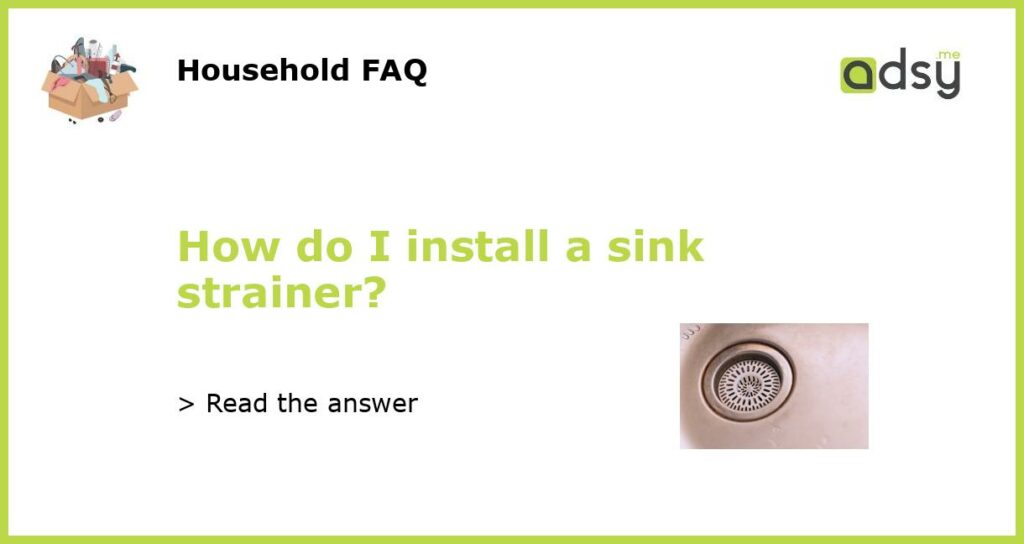What is a sink strainer?
A sink strainer is a device placed on top of a sink drain to prevent clogs and blockages caused by food particles, debris, and other small objects. It serves as a filter to trap solid waste while allowing water to pass through.
Why do I need a sink strainer?
A sink strainer is essential for maintaining the cleanliness and functionality of your kitchen or bathroom sink. Without a strainer, food scraps, hair, and other materials can easily go down the drain, leading to clogs and plumbing issues. A strainer helps prevent these problems by trapping debris, making it easier to clean and unclog the drain.
Tools and materials needed for sink strainer installation
To install a sink strainer, you will need the following tools and materials:
- Adjustable pliers
- Plumber’s putty
- Plastic or rubber gaskets
- Screwdriver
- Sink strainer assembly
Step-by-step guide to installing a sink strainer
Follow these steps to install a sink strainer:
- Turn off the water supply to the sink by closing the shut-off valves underneath.
- Place a cloth or towel in the sink to protect the surface and catch any falling debris.
- Remove the existing strainer by loosening the locknut underneath the sink using adjustable pliers or a wrench.
- Clean the area around the drain hole to remove any residue or old plumber’s putty.
- Apply plumber’s putty around the underside of the new sink strainer’s flange.
- Insert the new sink strainer into the drain hole and press it firmly against the sink surface.
- Place a rubber or plastic gasket onto the underside of the sink strainer and secure it with the locknut. Use adjustable pliers or a wrench to tighten the locknut until the sink strainer is secure.
- Use a screwdriver to tighten any screws or bolts on the sink strainer assembly, if necessary.
- Wipe away any excess plumber’s putty.
- Turn on the water supply and check for leaks. Tighten any connections if needed.
- Test the sink strainer by running water through the drain. Make sure it is properly installed and functioning.
Tips for maintaining your sink strainer
To keep your sink strainer working effectively, follow these tips:
- Regularly clean and remove any debris from the strainer by rinsing it under running water.
- Avoid pouring grease or oil down the sink, as it can accumulate and clog the strainer.
- Use a drain cleaner or natural remedies like baking soda and vinegar to prevent build-up in the drain.
- Replace the strainer if it becomes damaged or worn out to ensure proper functioning.
- Consider using a sink strainer with a removable basket for easier cleaning.
By following these steps, you can easily install a sink strainer and enjoy a clog-free and well-maintained sink. If you encounter any difficulties or are unsure about the installation process, it is recommended to consult a professional plumber.






